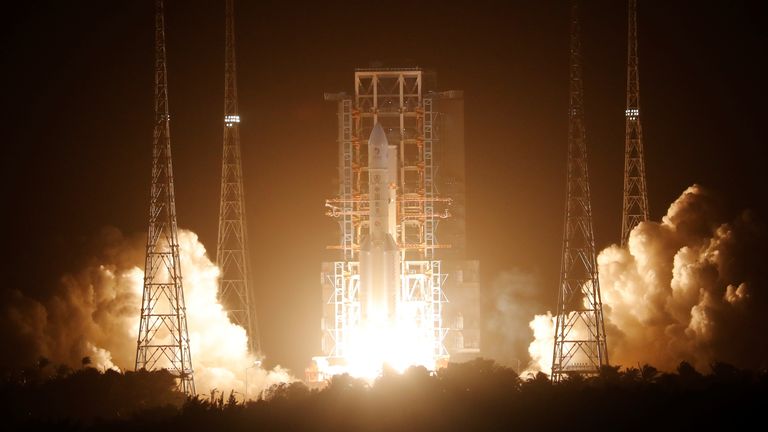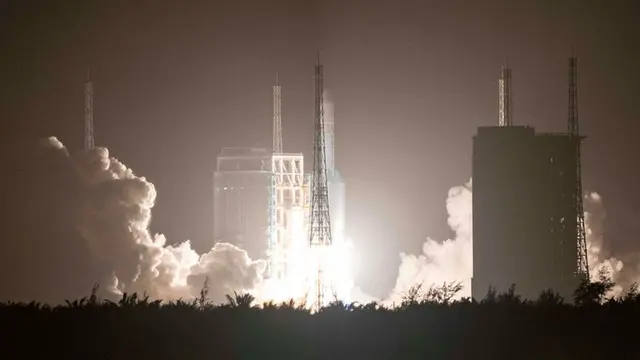China has successfully launched a robotic spacecraft to the moon to bring samples of lunar rock back to earth.
It is the first mission by any country since the 1970s to try to retrieve samples from the moon's surface.
A Long March-5 rocket carrying the Chang'e-5 spacecraft took off from Wenchang Space Launch Centre on the southern Chinese island of Hainan at 4.30am Beijing time on Tuesday ( 8.30pm GMT on Monday, 23 November).
The journey to the moon will take around eight days.
The Chang'e-5 mission, named after the ancient Chinese goddess of the moon, will seek to collect lunar material to help scientists understand more about the moon's origins and formation.
The mission will test China's ability to remotely acquire samples from space, ahead of more complex missions.
Spokesman for the Chang'e-5 mission, Pei Zhaoyu, said: "We think that there are two main purposes for the implementation of this lunar sampling mission.
"One is the scientific purpose. We can conduct sampling through circumlunar and moon landing explorations, but it is more intuitive and more direct to obtain samples for scientific research. Plus, there will be more instruments and more methods to study it on the ground. I think this is the scientific purpose.
"There is also an engineering purpose. Through the task of sampling and returning, we could have a more comprehensive grasp of relevant technologies of lunar exploration."
Please use Chrome browser for a more accessible video player

China launches spacecraft to retrieve moon rocks
If the mission goes as planned, it would make China only the third country to have retrieved lunar samples, joining the US and the Soviet Union.
After entering the moon's orbit, the spacecraft is intended to deploy a pair of vehicles to the lunar surface: a lander and an ascender.
The plan is for the lander to drill into the lunar surface, with a robotic arm scooping out soil and rocks. This material would be transferred to the ascender vehicle, which is due to carry it from the surface and then dock with an orbiting module.
The samples then would be transferred to a return capsule for the trip to Earth, with a landing in China's Inner Mongolia region.
The probe is due to be on the lunar surface for about two days, while the entire mission is scheduled to take around 23 days.
 简体中文
简体中文



